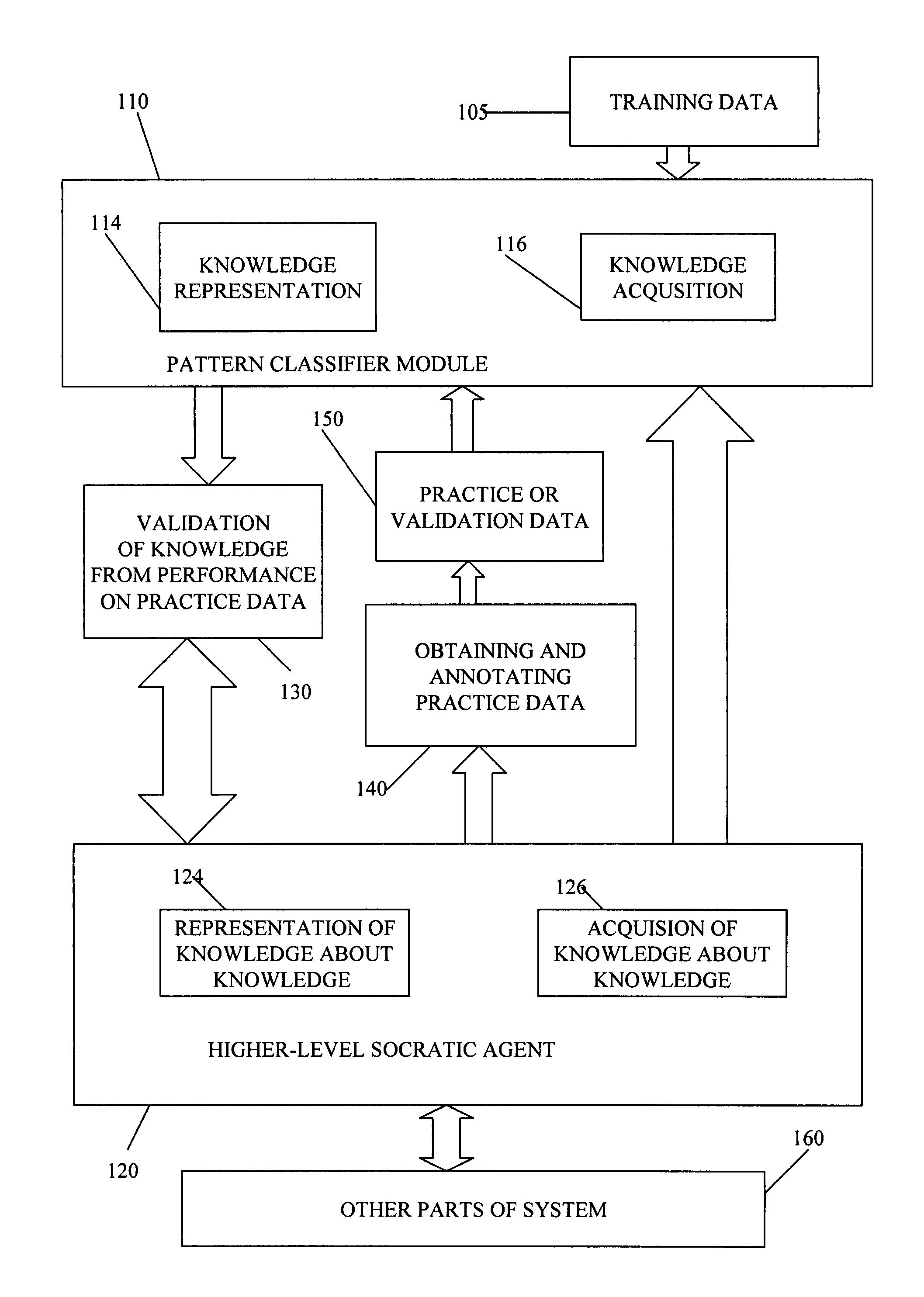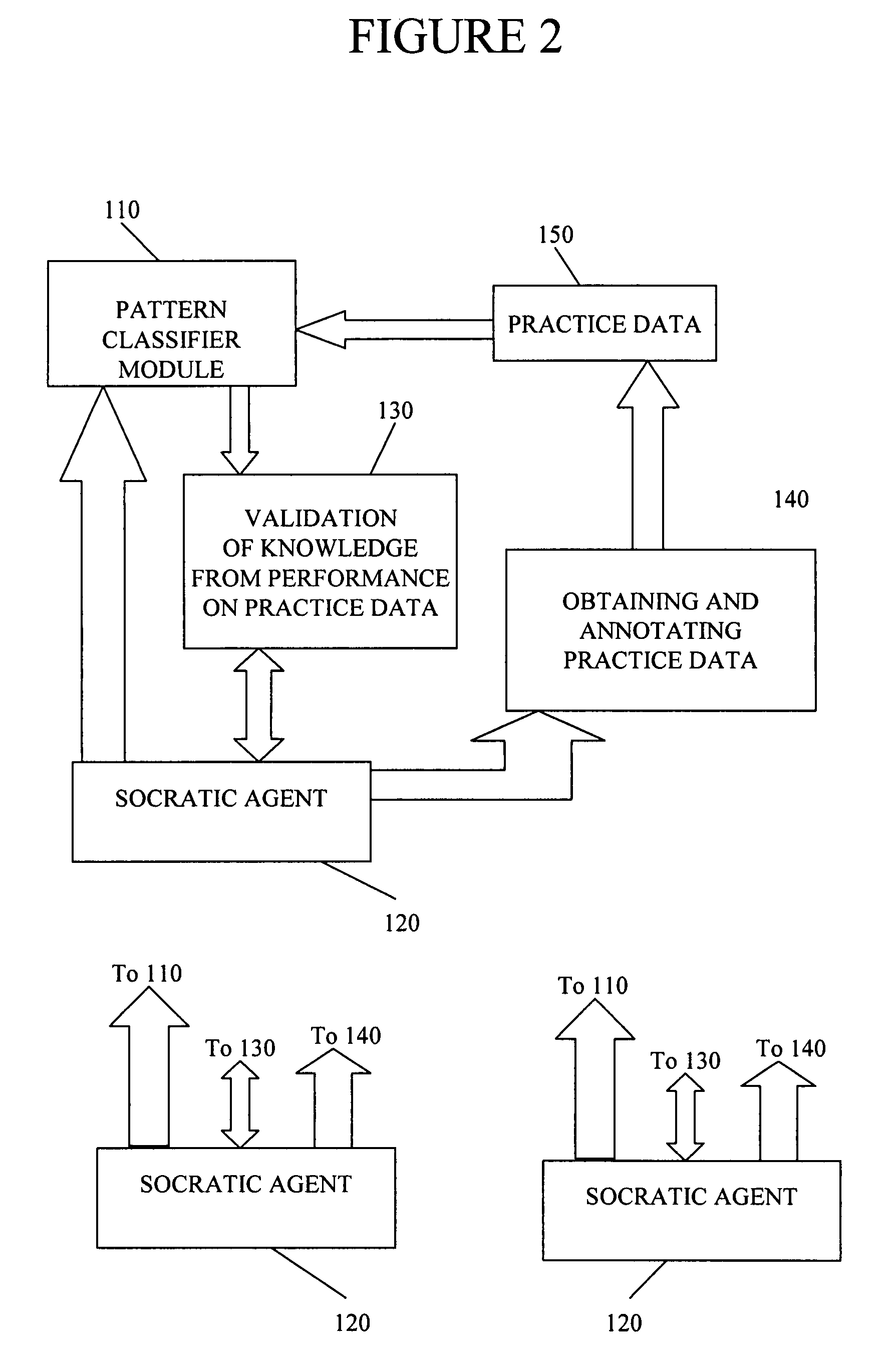Robust pattern recognition system and method using socratic agents
a pattern recognition and socratic agent technology, applied in adaptive control, process and machine control, instruments, etc., can solve the problem that the complex system may have a large number of such simple delayed decision socratic agents active, and achieve the effect of increasing the diversity among managing the component classifier modules more efficiently
- Summary
- Abstract
- Description
- Claims
- Application Information
AI Technical Summary
Benefits of technology
Problems solved by technology
Method used
Image
Examples
Embodiment Construction
Explanation of Special Terms:
[0079]A knowledge source is an object that includes a mechanism for knowledge representation and either a mechanism for knowledge acquisition or a collection of built-in base knowledge or both.
[0080]A classifier module is a processing module that receives samples of data features as input and generates classification results as output. The classification results may, for example, comprises an indication of the class best matching the input data or may comprises a score for each class indicating how well the data matches the given class. Implicitly, any pattern classifier has a representation of knowledge about the class it identifies. Generally, a classifier module is trainable and hence has a mechanism for knowledge acquisition. Therefore, any pattern classifier is a kind of knowledge source. It is to be understood that a classifier module is not necessarily implemented as a separate software module or as a separate piece of hardware. A single software ...
PUM
 Login to View More
Login to View More Abstract
Description
Claims
Application Information
 Login to View More
Login to View More - R&D
- Intellectual Property
- Life Sciences
- Materials
- Tech Scout
- Unparalleled Data Quality
- Higher Quality Content
- 60% Fewer Hallucinations
Browse by: Latest US Patents, China's latest patents, Technical Efficacy Thesaurus, Application Domain, Technology Topic, Popular Technical Reports.
© 2025 PatSnap. All rights reserved.Legal|Privacy policy|Modern Slavery Act Transparency Statement|Sitemap|About US| Contact US: help@patsnap.com



